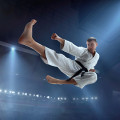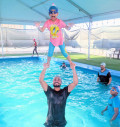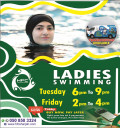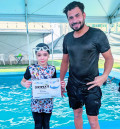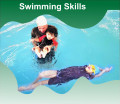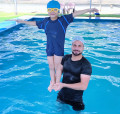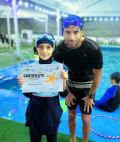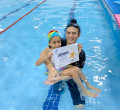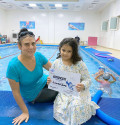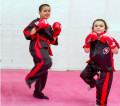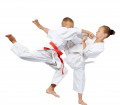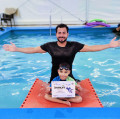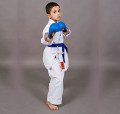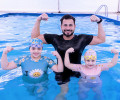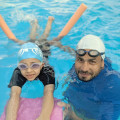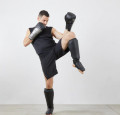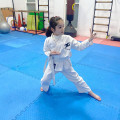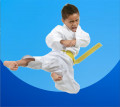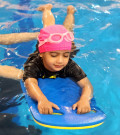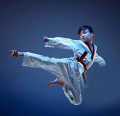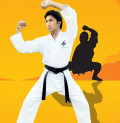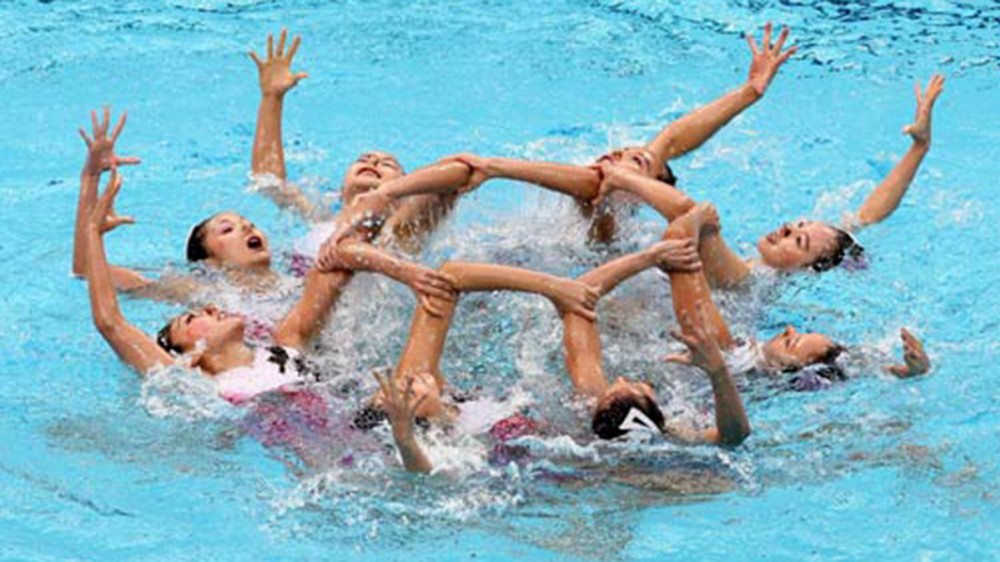
Dance In Water Like Beautiful Mermaids Performing Water Ballets
2023-01-18 - Swimming
Swimming is often referred to as an artistic sport due to its flexible movement. Imagine the beauty of swimming and ballet combined you get what is called the water ballet. Synchronised Swimming used to be known as 'water ballet' as the routines are essentially a series of athletic movements choreographed to a piece of chosen music and unlike the staged ballet, it is performed in water.
Lots of practice and skills required to hold your breath for minutes at a time while trying to look graceful and keeping in time to the music when carrying out a series of technical movements under water. Put on a beautiful smile when you emerge to the surface, making it appear as though the whole display is effortless. This is the world of Synchronised Swimming which is highly challenging, requiring ease of movements and the ability to stay upside down in water. The sport requires advanced water skills, strength, flexibility, endurance, grace, precise timing, artistry and exceptional breath control.
There are a variety of competitive categories in Synchronised Swimming: Solo, Duet, Trio, Team, Combination and Figures. Categories available to compete in the SEA Games include Duet and Team.
Synchronized swimming is a sport that combines elements of swimming, gymnastics, and dance. It is performed by teams of swimmers who perform choreographed routines in the water, set to music. The routines include a combination of solo, duet, and team routines, and are judged on technical merit, artistic impression, and difficulty. Synchronized swimming is typically performed by women, but there are also men's and mixed teams. The sport is governed by the International Swimming Federation (FINA) and is an Olympic sport.
Synchronized swimming, also known as artistic swimming, has its origins in the late 19th century. It began as a combination of swimming, gymnastics, and dance, and was performed primarily by women. The first recorded synchronized swimming exhibition was held in 1891 in Berlin, Germany.
In the early 20th century, synchronized swimming began to gain popularity as a recreational and competitive sport. The first synchronized swimming club was formed in Canada in the 1920s, and the first U.S. national championship was held in 1939.
In 1907, Australian swimmer Annette Kellerman popularized the sport of synchronized swimming by performing a water ballet in a glass tank at the New York Hippodrome. Kellerman, known as the "Diving Venus," was a professional swimmer and diver who performed in vaudeville shows and circuses. Her water ballet performance in the glass tank showcased a new form of entertainment that combined swimming, diving, and gymnastics, and it was a precursor to the sport of synchronized swimming as we know it today. Kellerman's performances helped to popularize the sport, and it began to gain popularity in the 1920s and 1930s.
Katherine Curtis was one of the pioneers of synchronized swimming and started one of the first water ballet clubs at the University of Chicago in the 1920s. Curtis, a physical education instructor and swim coach, was inspired by Annette Kellerman's water ballets and began to incorporate synchronized swimming routines into her swim classes. She formed the "Club de Natacion Sincronizada" at the University of Chicago and created the first synchronized swimming routines and routines for solo, duet and team events. She also developed the first scoring system for the sport. Curtis is considered to be one of the founders of the sport of synchronized swimming and her work laid the foundation for the sport's development in the United States.
The first official National Team Championships for synchronized swimming were held in Chicago, Illinois, United States in 1946. The event was organized by the Amateur Athletic Union (AAU) and was held at Riis Pool on August 11, 1946. This event was considered the first national championship for the sport of synchronized swimming in the United States, and it marked the beginning of organized competition for the sport. The event was called the AAU National Team Synchronized Swimming Championships, and it was the first of many national championships that would be held in the United States. The sport of synchronized swimming was officially recognized by the AAU in the same year.
In the 1950s and 1960s, synchronized swimming began to gain international recognition as a sport. It was added as a demonstration sport at the 1952 and 1956 Olympic Games and became an official Olympic sport for women at the 1984 Games in Los Angeles.
Artistic swimming was included in the program of the European Aquatics Championships for the first time in 1974. The first edition of the European Synchronized Swimming Championships was held in Belgrade, Yugoslavia. Since then, the event has been held every two years and has been organized by the European Swimming League (LEN). The European Aquatics Championships is an annual event that includes swimming, diving, open water swimming, and synchronized swimming. The inclusion of synchronized swimming in the European Aquatics Championships marked an important step in the recognition and development of the sport at the international level.
The sport has evolved over the years, with new elements, such as lifts and throws, being added to the routines. Today, synchronized swimming is governed by the International Swimming Federation (FINA) and is practiced by countries all over the world.
Synchronized swimming for men, mixed and duet events were added to the program in 2017, and the first World Championships for Men and Mixed duet was held in 2018.
The basic skills of synchronized swimming include:
Sculling: As previously mentioned, sculling is the hand movement used to propel and maneuver the body in the water. It is used to maintain position and stability, and to execute turns and other maneuvers.
Eggbeater kick: This is a specific type of kick used in synchronized swimming to keep the swimmer's body vertical in the water. The eggbeater kick is a combination of a breaststroke kick and a scissor kick and it allows the swimmer to stay in an upright position without using their arms to stay afloat.
Pikes and Pencils: These are two basic body positions used in synchronized swimming. The pike position is when the body is folded at the waist with legs straight and the pencil position is when the body is held straight and parallel to the surface of the water.
Arm movements: Arm movements are used to create the illusion of movement and flow in the routines. These movements include undulations, circles, and figure eights.
Leg movements: Leg movements are used to create the illusion of movement and flow in the routines. These movements include kicks, splits, and pointed toes.
Dances: Synchronized swimming routines include elements of dance, such as turns, leaps, and poses.
Endurance: Synchronized swimming requires a high level of endurance, as routines last for several minutes and can be physically demanding.
Flexibility: Synchronized swimming requires a high level of flexibility, as swimmers must be able to perform a variety of gymnastic and dance moves in the water.
Breathing: Synchronized swimmers need to be able to hold their breath for long periods of time and to coordinate their breath with their movements.
Showmanship: Synchronized swimming is also a performance sport, and a good synchronized swimmer must have a strong sense of showmanship and the ability to connect with the audience.
.







.jpg)





